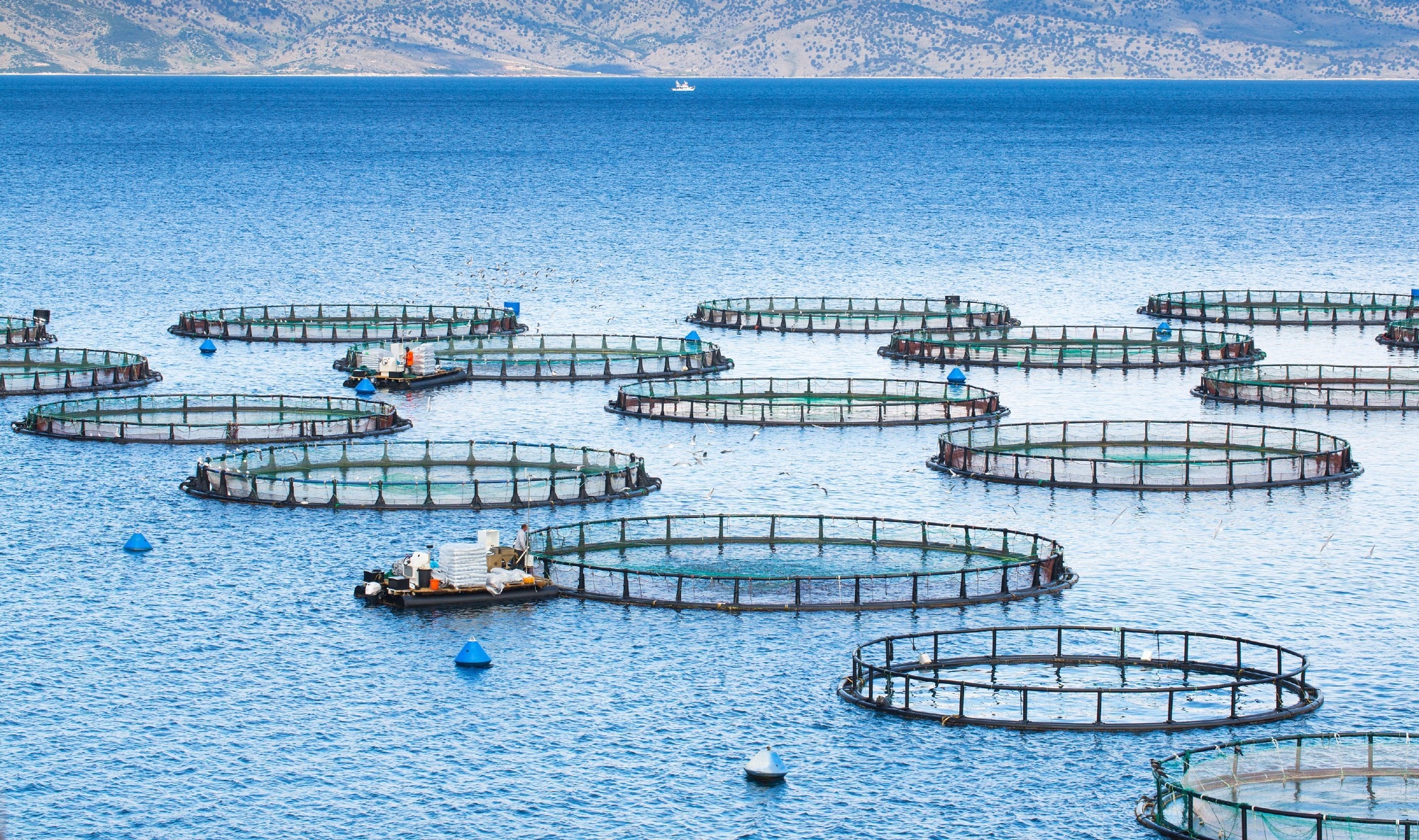An article published in the journal Remote Sensing explores utilizing artificial intelligence (AI) methods paired with remote sensing data to evaluate water quality suitability for cage fish farming in reservoirs. Cage aquaculture allows fish farming in lakes and reservoirs shared by communities, reducing infrastructure costs. However, monitoring water quality is imperative for success. While continuous sampling provides accurate measurements, a remote sensing approach utilizing AI analytical methods proves far more affordable and efficient.
 Study: Enhancing Cage Fish Farming Monitoring Using AI and Remote Sensing. Image credit: Sodel Vladyslav/Shutterstock
Study: Enhancing Cage Fish Farming Monitoring Using AI and Remote Sensing. Image credit: Sodel Vladyslav/Shutterstock
The Study
Researchers applied three AI techniques, including an optimal artificial neural network (ONN), an adaptive neuro-fuzzy inference system (ANFIS), and a coupled evolutionary algorithm-ANFIS model (EA-ANFIS), to Landsat 8 images of Iran's Latian reservoir. They focused analysis on three pivotal water quality parameters for cage fish farming – water temperature, dissolved oxygen (DO), and total dissolved solids (TDS). Moreover, two statistical measures were used to evaluate each predictive model: Nash-Sutcliffe efficiency coefficient (NSE) and root mean square error (RMSE).
To develop the robust and optimized ONN model, the study fed the different Landsat 8 spectral bands into numerous models containing differing numbers of hidden layers, ultimately optimizing to 15 hidden layers for water temperature prediction, 54 hidden layers for dissolved oxygen forecasting, and 41 layers for total dissolved solids concentration estimates.
Testing models with increasing hidden layers allows for determining the one with the lowest error and highest efficiency for each parameter. Once identified through this optimization method, the best model can be leveraged for actual water quality forecasting. This eliminates issues plaguing many past remote sensing studies applying neural networks containing arbitrarily selected one or two hidden layers without rigorous optimization.
For the cutting-edge EA-ANFIS approach, the researchers used particle swarm optimization, an AI technique imitating bird flock or fish school movement, to handle ANFIS model training. This innovative method converts the complex training process into an optimization problem to determine network coefficients and constants for peak performance. Finally, the traditional hybrid backpropagation algorithm method trained the system for the standalone ANFIS model, leveraging a combined fuzzy inference system and neural network.
Results and Discussion
The paired EA-ANFIS method leveraging particle swarm optimization and ANFIS performed best for water temperature (NSE = 0.45) and DO (NSE = 0.21) predictions in the reservoir case study. At the same time, the solo ANFIS technique topped TDS concentration estimates (NSE = 0.456). Notably, all models needed help accurately forecast DO levels critical for healthy fish. Nevertheless, as cage aquaculture fish farms demand precise, continuous water quality awareness, enabling responsive care for their cold-water species, AI-assisted remote sensing supplies an inexpensive, efficient supplemental monitoring system even with some parameters remaining challenging to predict perfectly.
While the optimized artificial neural network registered slightly better water temperature predictions, the cutting-edge coupled EA-ANFIS model combining particle swarm optimization and ANFIS proved nearly as accurate. With cold-water fish species like trout only thriving in waters between 9 and 15°C, responsive repositioning of reservoir cages relies on reliable advanced warning of temperature changes.
Here, AI-enhanced satellite imaging empowers the proactive protection of farmed fish during stressful summer months when countless recreationists ingress the reservoir, elevating pollution levels. Rather than waiting for fish distress reports to launch emergency interventions, preventative cage relocations triggered by early temperature rise alerts mitigate losses.
Predicting Dissolved Oxygen Vital to Cage Fish
With even the highest-performing model demonstrating insufficient proficiency in forecasting DO levels critical to farmed fish health, depending exclusively on AI-boosted remote sensing analysis remains a risky proposition lacking the rigors of scientific confirmation. While surprising given advanced AI techniques' proven capacity strengthening satellite data application for measuring other water quality parameters, these inconsistent DO prediction results still align with previous remote sensing studies noting similar difficulties.
Until significantly better methods emerge from ongoing research, cage aquaculture operations are best served by combining continuous satellite surveillance for general status checks and overall trends with regular on-site sampling, providing the most reliable DO measurement for responsive farm management.
With climbing TDS concentration signaling declining water quality that imperils farmed fish, tracking buildup via satellite enables strategic site selection and proactive cage repositioning. Though no single model perfectly predicted TDS levels across all case study reservoir monitoring points, the standalone ANFIS system leveraging the hybrid training algorithm proved relatively robust, registering a reasonably solid 0.456 NSE performance score. As positioning flexibility represents a primary advantage of cage systems over fixed land-based aquaculture, AI-boosted TDS tracking via remote sensing helps maximize this benefit through evidence-based site selections for reservoir-based fish farming operations.
Future Scope
By demonstrating state-of-the-art AI techniques strengthened by remote sensing-based water quality assessment, this research highlights satellite imaging's promise of supplying supplemental measurements supporting on-site sampling's role in responsive cage fish farming management. While no singular model delivered flawlessly accurate forecasts across all parameters and reservoir locations, the innovative paired EA-ANFIS and solo ANFIS approaches generated reasonably reliable water temperature and TDS concentration predictions.
With additional tweaking and development, enhanced next-generation AI methodologies may eventually furnish adequately precise DO estimation from space-captured data. Still, today's AI-enhanced satellite monitoring supplies essential cage aquaculture operations with low-cost, efficient supplemental water quality measurement, enabling informed decisions across remote reservoirs.